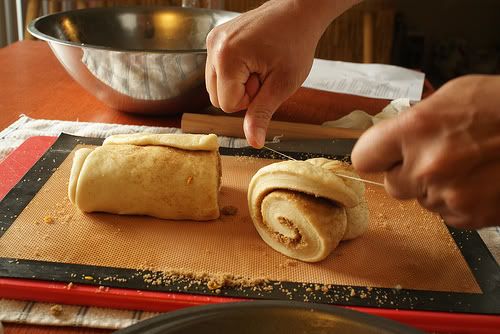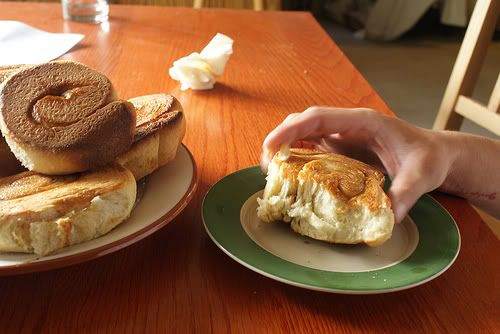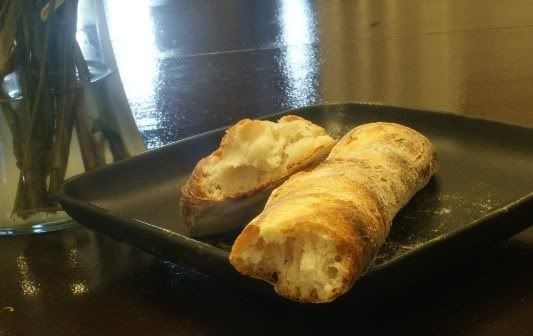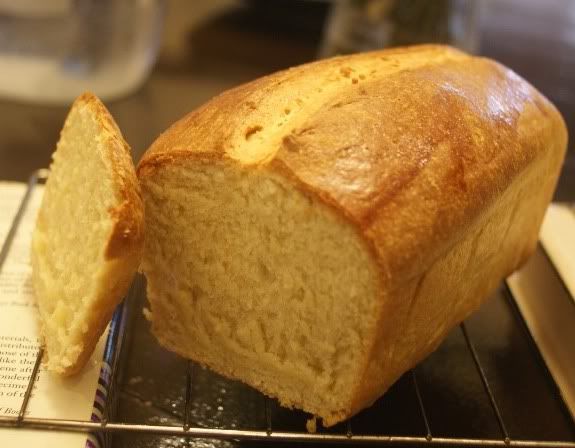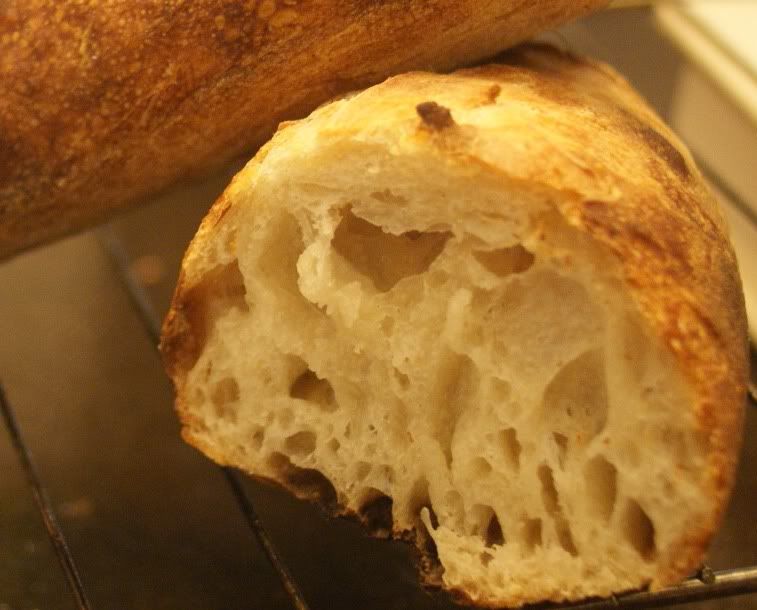Today, I made Peter Reinhart's Rich Man's Brioche from BBA. I've never made such a rich, buttey bread, but it was delicious. I could only eat one slice, but with raspberry jam, it made the best breakfast.
I posted this on the blog my brother and I share ( http://bakingacrosscountry.wordpress.com/ ) We're both trying to complete the Bread Baker's Apprentice challenge, and also, I'm completing a high school project about artisan breads.
Anyway, here's the post!

Nowadays, we know brioche as a rich bread, enriched with enormous amounts of butter and eggs. The name brioche is derived from the Norman verb, "to pound." The Norman region of France was well known for the butter which they produced, and excessive kneading was required to incorporate all the butter into the dough.
Brioche came to Paris in the 1600s as a much heavier and far less rich bread than the one we know today. Supposedly brioche became well known with Marie Antoinette's famous quote, "qu'ils manget de al brioche" during the 1700s, which translates to "let them eat cake." This referred to the peasants who rioted because there was a lack of bread. The different butter contents of bread were baked for different classes-even the food reflected the social-class divides in 18th century France.
In the Bread Baker's Apprentice, Peter Reinhart provides three different recipes which vary in the butter content. Rich Man's Brioche has about 88% butter to flour ratio, Middle-Class Brioche has about 50%, and Poor Man's Brioche has about 20%. Since I had never made brioche, I splurged and made Rich Man's-why not? The recipe makes three loaves- In my head, the idea of three loaves somehow justified the pound (?!) of butter in the bread.
Traditionally, brioche is baked in molds as brioche a tete, which are formed with two balls of dough. Served with jam, brioche makes a perfect breakfast, and topped with meats and cheese, it can be served for lunch or dinner, thus making brioche a truly versatile bread.
I began the brioche with a sponge of flour, yeast, and milk. After the sponge rose and collapsed, I added five eggs. Next, incorporated the dry ingredients (flour, salt, and sugar), and mixed until the flour was hydrated.
After a few minutes, I mixed in a stick of butter at a time, making sure they were fully incorporated before the next addition. The dough looked smooth, and almost icing-like, because of the butter. I had never worked with such a fluffy, light bread dough, so I felt kind of intimidated in new waters.
After all the butter was added, I mixed for a few more minutes until the dough was soft, and tacky, but not sticky. I spread the dough onto a cookie sheet and put it in the refrigerator to firm up and retard overnight.
Since I don't have brioche molds, I used three loaf pans. I cut the dough into three even pieces, and with a rolling pin, I formed a rectangle. Like sandwich bread, I rolled the dough up, and placed them seam-down in the pan, and let it rise for about two hours. After it had risen for the second time, I brushed it an egg wash, to form a shiny crust.
In a 350 degree oven, I baked the bread until it was golden brown, and the internal temperature reached 190 degrees. However, when I tried to take the bread out of the pan, it kind of stuck to my not-nonstick pans, which I didn't grease. With some slight prying, I got the bread out, but slightly crushed and deflated a loaf. Also, when forming the loaves, I didn't seal the seam well, and when baked, it split on the sides.

Once cooled, I cut the bread, which flaked like a croissant, and tasted so rich and delicious. Since there is so much butter, one slice is more than enough, but every bite was so delicate and smooth. I'm glad I splurged for Rich Man's brioche, but I'm not sure how often I'll make it because of it's richness. With raspberry jam, it honestly made the best breakfast.







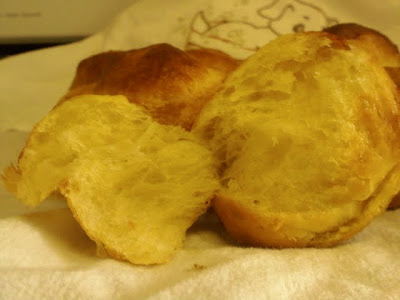
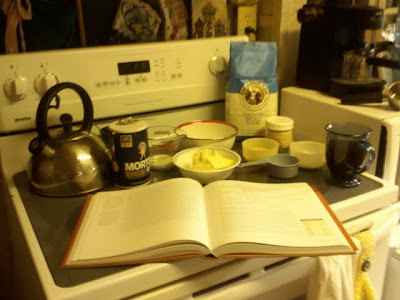
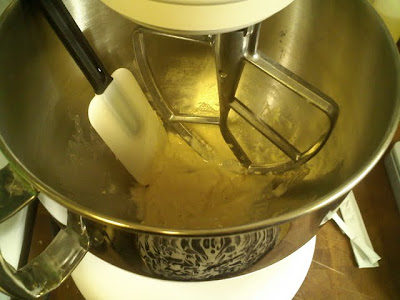


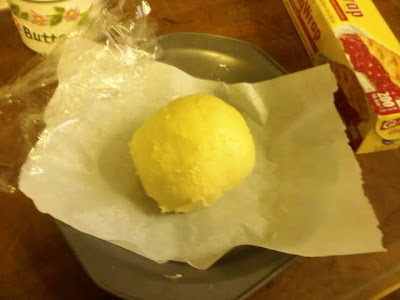
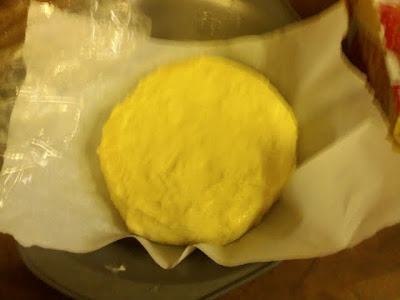
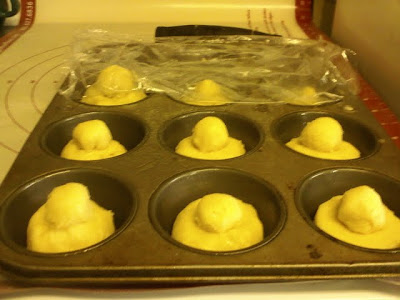





 They turned out fairly well I thought, not having made them for a few years and I was very happy with the flavour. Unfortunately I'd run out of time that day to do anything more with the feuillete and decided to leave it for the next day. When I got home from work the next afternoon I set about rolling out the dough to a 14x9 inch rectangle and dividing that into 3” wide strips of dough that I piped a 3/4” strip of filling (recipe to follow) along the length of each, then alongside the length of that strip I placed blueberries side by side. These were then rolled string fashion, or like you would a cinnamon bun roll, to 15 1/2” and then made into a 3 strand braid and placed in a loaf tin to rise.
They turned out fairly well I thought, not having made them for a few years and I was very happy with the flavour. Unfortunately I'd run out of time that day to do anything more with the feuillete and decided to leave it for the next day. When I got home from work the next afternoon I set about rolling out the dough to a 14x9 inch rectangle and dividing that into 3” wide strips of dough that I piped a 3/4” strip of filling (recipe to follow) along the length of each, then alongside the length of that strip I placed blueberries side by side. These were then rolled string fashion, or like you would a cinnamon bun roll, to 15 1/2” and then made into a 3 strand braid and placed in a loaf tin to rise.

 It took about an 1 ¼ hrs to rise and 25-30 minutes in a 380F oven to bake. When it came out I immediately applied a thin apricot glaze to seal it and help prevent staling, then sprinkled it with toasted almond slices for garnish. When it had cooled sufficiently I drizzled the loaf with some white vanilla fondant I'd made a few days before.
It took about an 1 ¼ hrs to rise and 25-30 minutes in a 380F oven to bake. When it came out I immediately applied a thin apricot glaze to seal it and help prevent staling, then sprinkled it with toasted almond slices for garnish. When it had cooled sufficiently I drizzled the loaf with some white vanilla fondant I'd made a few days before. 
 The braid didn't rise quite as high as I would have liked since by this time the dough had lost some power from the additional day it'd had before I could use it, but it turned out well enough that I knew I had to try it again . As far as the flavour went?... pretty incredible. I'll get into that more a little later in this post but for now....Wow! Some photos of the the finished loaf.
The braid didn't rise quite as high as I would have liked since by this time the dough had lost some power from the additional day it'd had before I could use it, but it turned out well enough that I knew I had to try it again . As far as the flavour went?... pretty incredible. I'll get into that more a little later in this post but for now....Wow! Some photos of the the finished loaf. 





